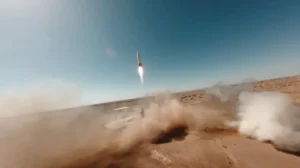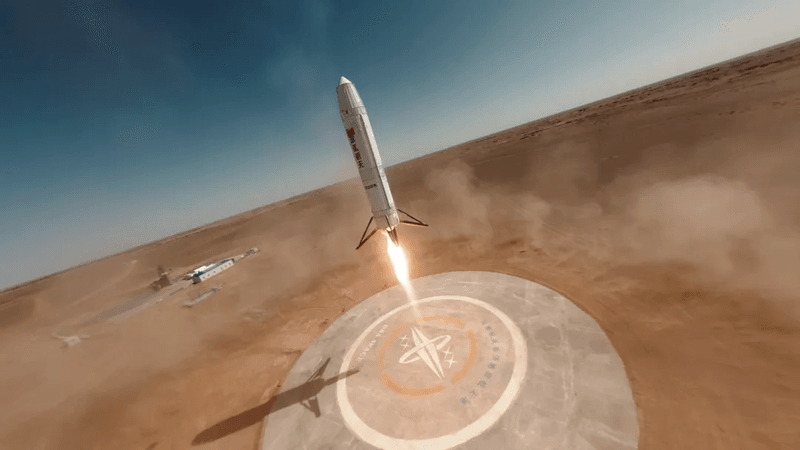Chinese start-up Deep Blue Aerospace has released video footage and a statement regarding a first high-altitude vertical recovery flight test of the Nebula-1 rocket, which was intended to demonstrate the rocket’s climbing and precision landing capabilities. Although the test ended in an explosion, the company considered the test a partial success.
Deep Blue Aerospace tested the Nebula-1 carrier rocket at the Ejin Banner Spaceport in Inner Mongolia on Sunday, September 22. The goal of the test was to lift the rocket to an altitude of 5 to 10 kilometers, followed by a safe landing at a designated point. Three propulsion engines ensured a successful launch, after which two of them were shut down during the descent phase. The last engine was to provide stabilization and deceleration before landing. Unfortunately, due to malfunction the engine shut down at too high an altitude, leading to an explosion in the final phase.
Despite the incident, Deep Blue Aerospace reported that 10 of the 11 planned test objectives were achieved. What’s more, the rocket landed just 0.5 meters from its planned location. The company has announced another test for November, which could be crucial in preparing for the 100-kilometer altitude test.
The Nebula-1 rocket is being compared to SpaceX’s U.S. Falcon 9 because of its similar two-stage system. Nebula-1 will be able to lift a payload of up to 2 tons into low earth orbit (LEO), and up to 8 tons in an upgraded version. Furthermore, the company has already announced a future Nebula-2 model, which is expected to have the ability to transport payloads of up to 20 tons to LEO. By comparison, the Falcon 9 is capable of delivering nearly 23 tons to the same orbit.
Deep Blue Aerospace is not the only Chinese start-up working on rocket technologies. In September, Landspace conducted a similar test, using a prototype hopper for its future Zhuque-3 rocket. The hopper reached a record altitude of 10 kilometers for the project, after which the engines were shut down, allowing it to free-fall. At an altitude of about 4.5 meters above the ground, the engines were restarted, allowing it to decelerate and land safely.
Chinese space companies are competing boldly in the rocket technology market, seeking to innovate to reduce costs and increase the efficiency of spaceflight.

Photo: Jiangsu Deep Blue Aerospace Company via Weixin




